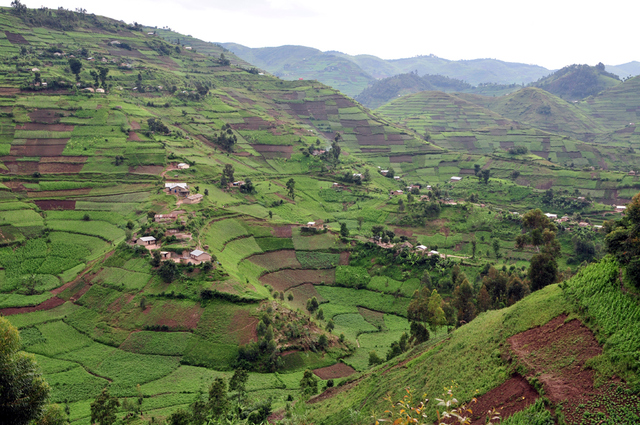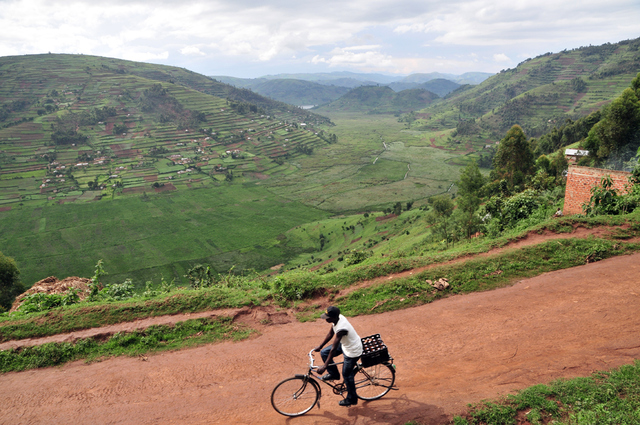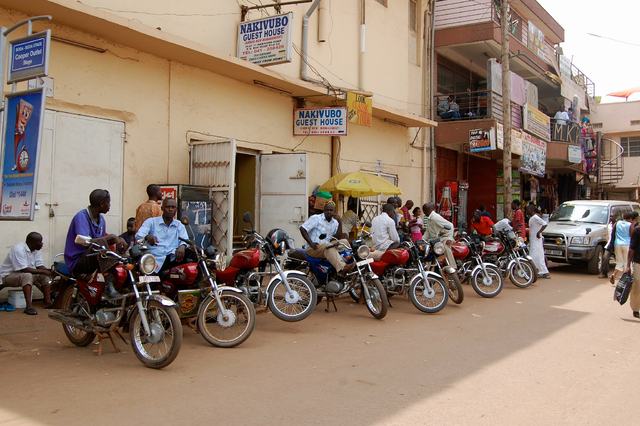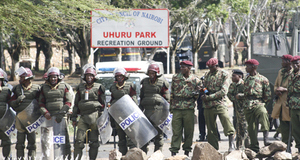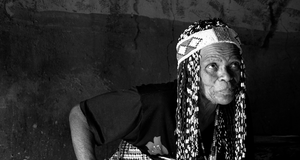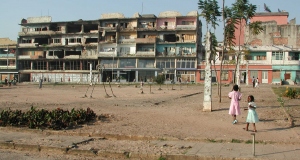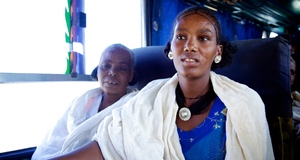From the FieldBoda Boda: The Impact of Motorbike Taxi Service in Rural Uganda
By
2014, Vol. 6 No. 11 | pg. 1/5 | »
IN THIS ARTICLE
KEYWORDS
AbstractRural populations in sub-Saharan Africa often suffer from a lack of access to transportation. This study analyzes the impact of a motorbike taxi service called Boda Boda in two villages in southern Uganda, and specifically queries how access to this transportation system can increase general welfare levels. I use econometric tools to analyze quantitative data. Binary probability regressions show counterintuitive behaviors like high sensitivity to distances only in regard to accessing non-productive activities like health infrastructure. Poisson regressions show that the likelihood of undertaking multiple trips in Boda Boda is high only in the presence of agricultural surplus. A qualitative analysis based on four surveys showed that Boda Boda is largely used to foster social relations, and confirms that it is rarely used as a method to access health or education facilities. I speculate about the possible importance of Boda Boda in enhancing the freedom of remote populations and its implications in their development process. This research is based on fieldwork conducted in Uganda from December 2013 to January 2014. This paper evaluates its social and economic impact on the rural population in south west Uganda. The selected area is located in Kabale District in south Uganda and it is of particular interest due to its geographic features characterized by mountains and valleys with the absence of paved roads. The research was carried out in two villages, Nangara (4 kilometers from the capital city) and Kigarama (8 kilometers from the district capital). There is a gap in the literature when it comes to both discussing and empirically evaluating the usefulness of this relatively new means of transport. This study provides a quantitative and qualitative analysis of Boda Boda’s impact on the welfare of remote rural populations. With a binary probability linear model, I show that individuals in Kigarama are distance sensitive in regard to the use of Boda Boda to access health facilities. I also show that subjects in Kigarama without agricultural surplus are not sensitive to the market distance. A further finding for Kigarama is that the presence of agricultural surplus is by itself a strong positive factor for increasing the likelihood of using the Boda Boda system. Above and Below: The rolling hillsides of southern Uganda, combined with limited infrastructure and few paved roads, make travel in the region difficult. Bicycles (below) and motorobikes are therefore a widely used form of transport. Photos: Neil Palmer/CIAT SA-2 Above: Boda Bodas lined up and waiting to transport customers. Photo: flickr/lachiquita SA-2 For the village of Nangara, the data showed that the only difference with the village of Kigarama is that individuals are not distance sensitive in regard to the use of Boda Boda to access health facilities. The data also showed that individuals in both villages are price sensitive in regard to Boda Boda costs. I then used a Poisson regression to analyze the factors affecting the instances when multiple trips with Boda Boda are statistically probable. The results confirmed the data of the previous regressions, and added the noteworthy significance of the education level factor for the village of Kigarama, where every additional year of schooling has a strong impact on the likelihood of undertaking multiple Boda Boda’s trips in a month. A qualitative analysis showed that the perceived usefulness of Boda Boda service among the villages’ citizens is very high. Surveys showed that the populations under study mainly use the motorbike taxi service to maintain or create social interactions, while its utilization is very scarce for accessing quality schools. These findings pose the question about how to properly evaluate the meaning of welfare in rural sub-Saharan Africa. My research suggests that different priorities shape the concept of welfare in south rural Uganda as compared to urban communities. A survey I performed during the fieldwork suggests that the populations living in the two villages perceive Boda Boda transportation system as a valuable tool for increasing their welfare level. This paper is organized as follows: in the first section I present a brief review of the academic literature about the issue of isolation in rural areas and an analysis on the concept of welfare. In the second section I present an economic and geographic analysis of Uganda and Kabale district. In the third section I present an analysis of the Uganda transportation system, the road infrastructure of Kabale district, and a review of the Boda Boda history phenomenon. The fourth section describes the research method. Finally, the fifth section reports and evaluates the research results. 1. Literature Review1.1 Isolation LiteratureThe issue of isolation of many rural communities in developing countries and its impact on the welfare of its population has been analyzed by various scholars. The subject has been addressed by comparing the development of the remote communities with that of urban areas. The academic literature generally undertook two different approaches. The main goal of the first methodology is to measure the monetary inequalities between the isolated and integrated areas and to investigate the cost-benefit ratio of possible infrastructure investments aimed at integrating the remote populations to the country economic network. Chamberlain (2007 p.185) and Stiefel (2008 p.9) suggest that that remoteness, defined as travel time during the dry season from the commune center to the nearest urban center, negatively affects agricultural productivity and incomes at the household level. Through their econometric analysis, they showed that the lack road infrastructure negatively impacts the agricultural output and productivity. The two researchers pointed out that the insufficient number of roads is particularly serious in developing countries where the agricultural sector accounts for a large share of gross domestic product (GDP) and where poverty is mainly concentrated in rural areas. Fan and Hazell in 2001, after their work on time-series data in India and People’s Republic of China, were able to show how government spending had a positive impact on agricultural output in remote areas, and generated a subsequent temporary increase in income. Warr in 2005 also showed how in Laos, between 1998 and 2003, road improvements generated an increase of 9.5% in rural consumption of food. Similar evidence was found in Ethiopia (Dercon et. all 2005, 41), Tanzania Zambia and Mali (Ellis et. all 1998, p.56). An academic literature analysis suggests that “…the prevailing notion [of these authors] is that as household distance from roads increases (on roads which eventually lead to markets), the income/consumption expenditure of household decreases.” (Raballand et. all 2009, p. 23) Many authors acknowledge, however, that investment focused solely on the growth of agricultural productivity and the increase of rural consumption does not necessarily reduce rural poverty (Devarajan, 2003, p. 548). Deininger and Okidi (2003 p.494), and Fan (2007 p.1219) showed that despite efforts made by Governments, poverty in rural regions, and mostly in remote areas, remains at high level. Moreover, other authors showed that heavy investments in rural roads in order to allow 100% population connectivity is a mistake since the benefits would be negligible, while the costs would be unaffordable by developing countries (Raballand et. all 2009, p.13). The analysis of the impact of living in remote rural areas on personal welfare cannot be limited to an economic study of agricultural productivity and temporary consumption increase. The second academic approach to the problem of isolation of rural communities in developing countries arises from the critique of the idea of using only economic analysis for the understanding of the issue. According to these scholars, isolation is not just an obstacle to access the markets, but it is mainly the impediment for rural population to have access to the real freedoms which stem from the interaction and integration with a broader network of opportunities. The main representative of this current of economic thought is the Indian economist Amartya Sen. He is one of the harshest critic of the dominant economic view that reduces human behavior to the maximization of utility calculated only in monetary terms. This debatable cultural approach might cause developing population to fall into what the German philosopher Martin Heidegger described as “calculative thinking:” Calculative thinking never stops, never collects itself. Calculative thinking is not meditative thinking, not thinking which contemplates the meaning which reigns in everything that is. (Heidegger 1959, p.46) The “calculative thinking” is the simplest way of thinking; it directs human behavior only in terms of immediate profit. Heidegger suggests that it is the “meditative thinking” which, although more strenuous, leads humanity forward. Sen seems to follow the philosophical idea that in order to lead developing population forward their meditative thinking contribution is essential. The economist thus critiques the idea that the processes of developing rural areas should solely include the distribution of services to the populations and, possibly, safety nets for the very poor. In his 1999 “Development as Freedom” Sen suggests that the development of the remote areas is a “…process of expanding the real freedoms that people enjoy.” (p.36). The novelty of the Nobel Prize thought is then that development cannot be identified and measured simply with per capita production growth or increase of consumption. Sen argues that “…capability deprivation is more [serious] than lowness of income since income is only instrumentally important…and its value…depends on social circumstances.”(Sen 1999, p.131). The economist also contends that real development is the result of freedom which he defines as the interdependent bundle of political Freedom and civil rights; economic freedom; social opportunities; transparency guarantees which Sen define as possibility to interact with others and safety nets. Human development is the result of the social structure, the individual capabilities, the opportunities that every person can enjoy, and the most appropriate social policies shared by the local population. Sen recommends that we must analyze poverty, the quality of life, and the social inequalities not only through the traditional economic indicators like income or consumption expenditure (which in remote areas in sub-Saharan Africa is scarce), but also to consider the possibility of different life experiences which the individuals living in remote areas value as positive and important. According to Sen, the key to development is not just the ability to feed themselves and their own family, to have access to health care and education, and having a decent shelter; it is, more importantly, the opportunity to participate in the social life of the area in order to affect the political and economic policies which will affect the territory. 1.2 Need for InteractionSince the mid-1970s some scholars, including Michael Lipton, identified rural isolation and distance from urban centers as the real obstacle to the growth of developing countries (Lipton 1977, p.427). The lack of connection between remote and urban populations reduces the opportunities given to rural communities, to have access to basic services or to influence the institutions and policies that could improve the quality of life of the community. Development, as argued by Sen, must be understood even in remote areas, as a process of increasing people’s opportunities to self-determination, which has to be experienced in the private and socio/political sphere. Moreover, the social exclusion, in these remote areas in terms of non-participation in the country’s political and economic processes also implies an irreparable loss of human capital, which might jeopardize future growth. One way to facilitate the development of the personal well-being of these communities is to increase the interactions and integration with other local communities. An example of these activities comes from rural villages in southern Uganda where the forms of human mobility, while suffering from a lack of infrastructure are critical to the improvement of the quality of life. These activities are a representation of livelihood which has been defined as: the assets (natural, physical, human, financial and social capital), the activities, and the access to these (mediated by institutions and social relations) that determine together the living gained by the individual or household. (Ellis F. 2000, p.12) Most of the various forms of mobility used by the populations living in rural areas are an integral part of their life system. These forms of mobility lead to two different outcomes. The first is the social integration among the communities of neighboring villages through which, family and community ties are established, reaffirmed and consolidated. The second concerns the interaction between rural and urban economy. The contact between two different local economies allows people to have a greater financial security. For many families, in fact, the system of rural / urban / rural mobility with the commercialization of the intermediate agricultural products and handcrafts is a form of subsistence, and creation of a capital which supports a strategy for the management of the risk of poverty of these families. 1.3 WelfareThe concept of welfare is not easy to define. The prevailing definition arose in close correlation with the development of the modern economy. It represented the extension of the notion of wealth, the first goal of classical economics, emphasizing that the ultimate effect of capital is, or should be, to increase the well-being of the individual. In the last century the evolution of this concept has brought welfare to “…diventare funzione fondamentale dell’espressione istituzionale della societa’, ossia lo Stato”1 (Borgonovi 2006, p.27). The concept of the European welfare is thus based on the principle that the State should protect the dignity of men and women and the community as a whole. Even though it is true well-being is sought by every individual, the particular social, economic, and political history of most of the African continent, does not make it possible yet to apply the classic concept of the welfare and its western evolution. Due to its colonial past and the extractive institution established by the European colonizers, most African countries are not currently experiencing the political condition which allows the development of institution capable to guarantee the access to welfare for all their citizens. A general lack of economic means and, probably, poor institutions make reasonable arguing that the assumptions stated by Borgonovi cannot be yet applicable to many African countries. In the western countries, mainly European, welfare is a fundamental function of the States; in Africa this function cannot be carried out. A different model of welfare for remote African rural communities should therefore be considered; one that emphasizes the principle of freedom for every individual and value the activities promoted by the individuals through their relational networks.Continued on Next Page » Suggested Reading from Inquiries Journal
Inquiries Journal provides undergraduate and graduate students around the world a platform for the wide dissemination of academic work over a range of core disciplines. Representing the work of students from hundreds of institutions around the globe, Inquiries Journal's large database of academic articles is completely free. Learn more | Blog | Submit Latest in Economics |

